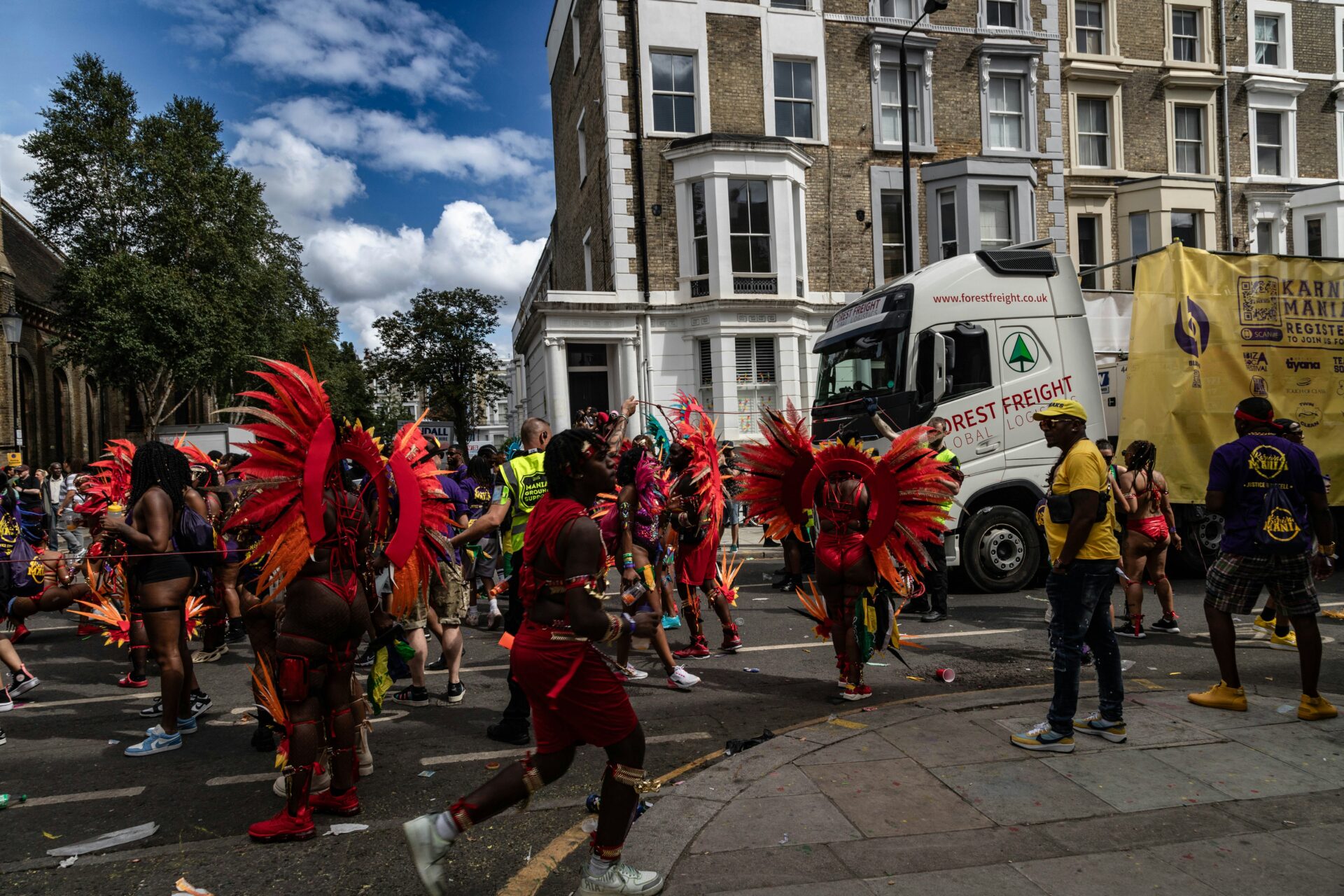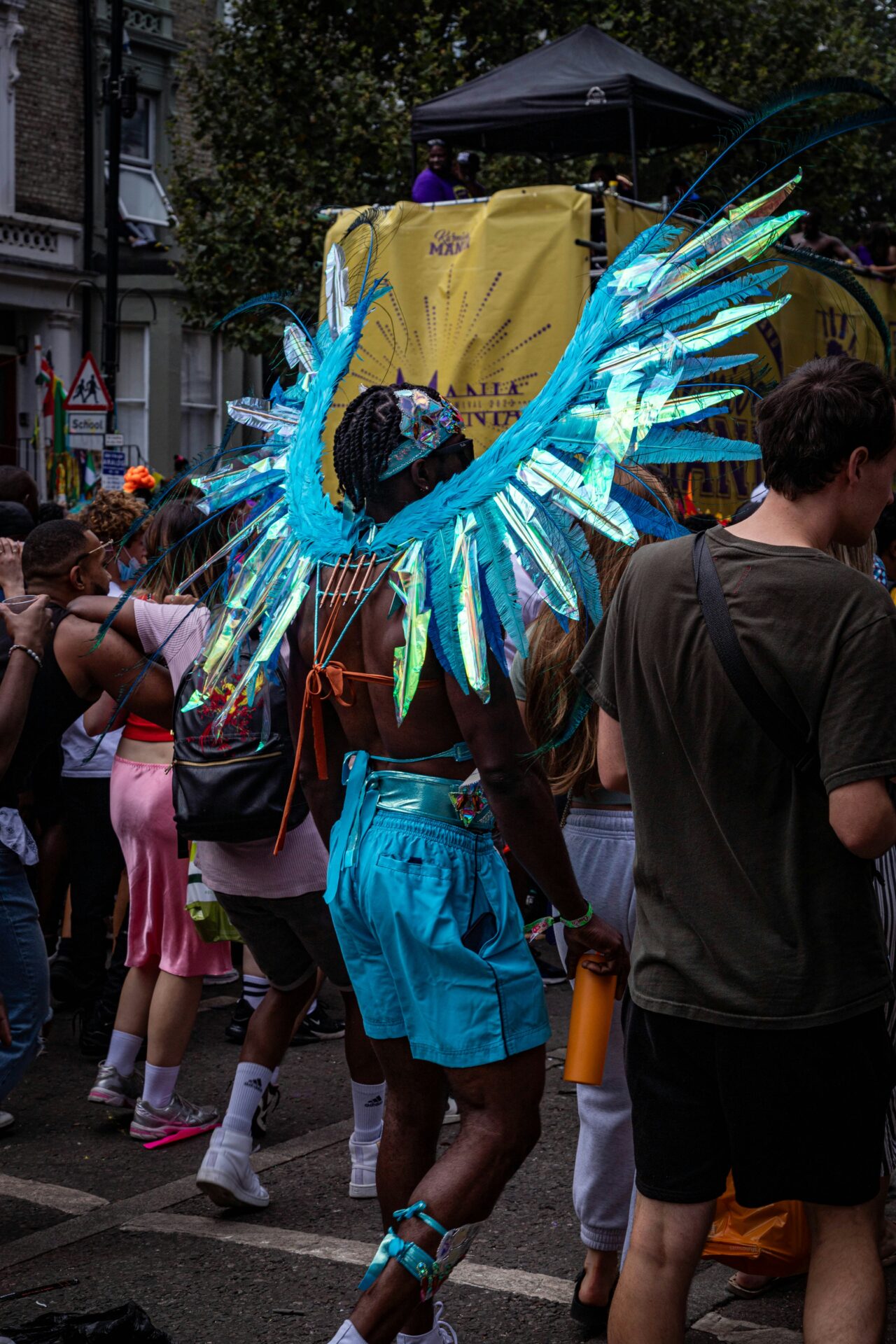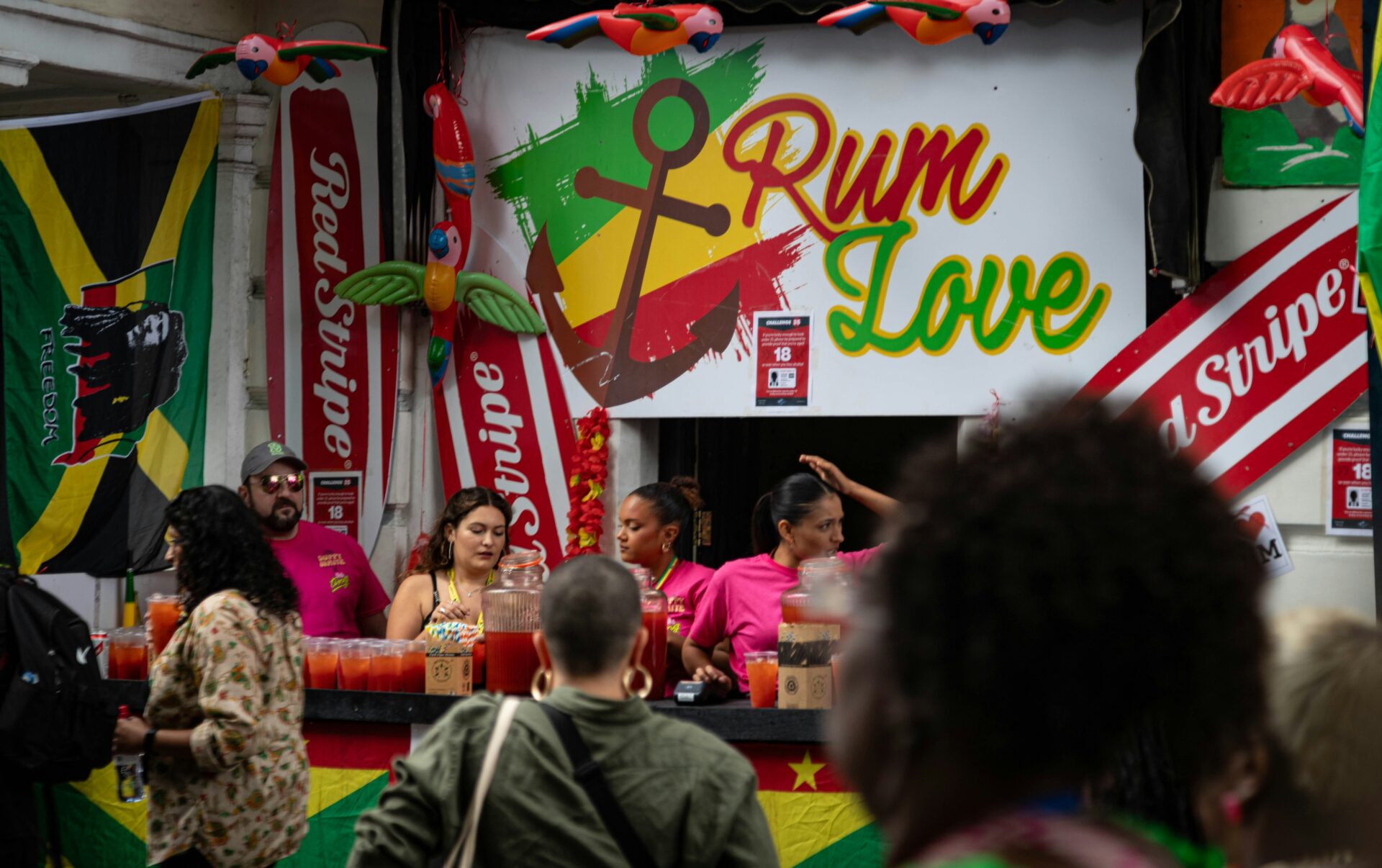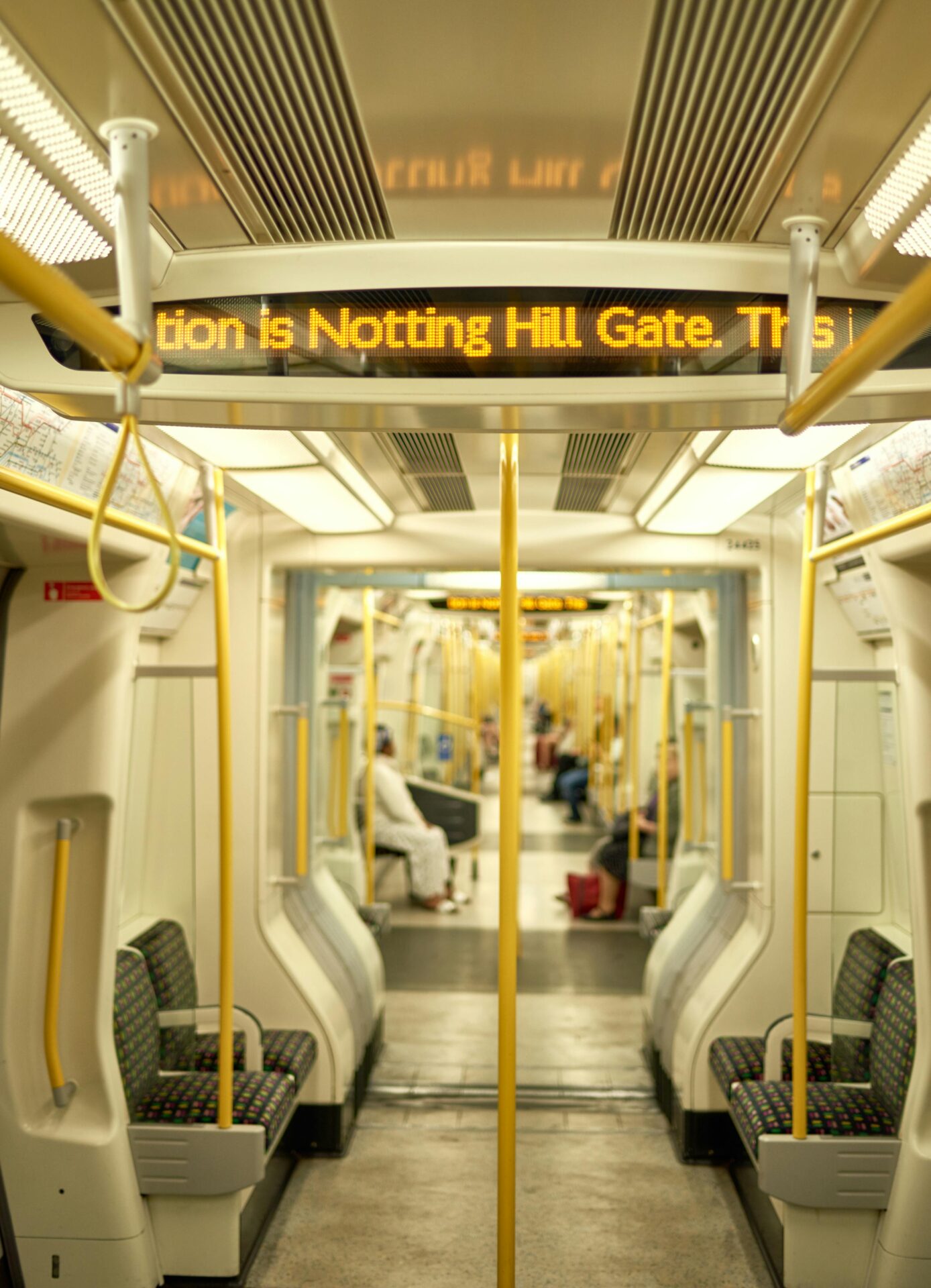Bold colors, booming music, and a sea of grinning faces—that’s what hit me the moment I wandered into Notting Hill during August’s legendary carnival.
Notting Hill Carnival stands as London’s biggest street festival, bringing Caribbean culture to life with parades, steel drums, and mouthwatering food.
As I moved through the crowded streets, dancers and floats swept past, filling every corner with so much energy that I couldn’t help but want to join in.
The whole city feels different during these two days. Notting Hill turns into a place where everyone’s welcome, and the streets thump with rhythm and happiness.

The Heartbeat of Notting Hill Carnival: History and Culture
When carnival season rolls around, I get swept up in the colors, music, and this wild sense of joy. This celebration isn’t just any party—it comes from deep roots and carries a message that really touches all of London.
Origins of a Vibrant Community
I found out Notting Hill Carnival started in the 1960s, launched by London’s Caribbean community. These gatherings began as a response to racism and tension after many Caribbean immigrants arrived.
They fought discrimination with unity, music, and dance—turning tough times into celebration.
The first official event happened in 1966, when activist Claudia Jones and others organized Caribbean festivals indoors. Soon, the parade spilled outside.
Jamaican, Trinidadian, and other cultures blended together, laying the foundation for what we see today. The steel pan, calypso rhythms, and wild costumes all come from this history.

Significance of the Celebration in London Life
Notting Hill Carnival feels like so much more than a street party. It’s a proud show of culture for West London and the whole city.
Every year, millions gather in central London to celebrate diversity, freedom, and creativity. Food stalls pack the roads with jerk chicken, patties, and fried plantains, and the air just smells amazing.
Locals and tourists dance shoulder to shoulder. I see families jumping in, kids spinning in costumes while samba and soca blast from huge speakers.
The event sparks conversations about identity, belonging, and community strength. For loads of Londoners, the carnival is a tradition you just don’t skip.

Evolution Into a World-Famous Street Festival
What started as a community festival has grown into one of the world’s biggest street parties. When I walk through the crowds, I hear dozens of languages and meet people from everywhere.
Over two million people show up every August.
The parade now features everything from traditional Mas bands to booming music trucks. Organizers have tightened up safety and logistics—maps, security, and handy amenities are everywhere.
But honestly, the most important stuff hasn’t changed: the wild costumes, creative buzz, and that sense of togetherness that makes London come alive every summer.

Immersed in Color: Costumes, Music, and Performance Highlights
Notting Hill Carnival is this wild burst of color, sound, and performance. Every year, I get drawn in by a parade of sparkling costumes, the deep clang of steel drums, and street performers who never seem to run out of energy.
Dazzling Costumes and Carnival Characters
The costumes here are honestly jaw-dropping. I remember being completely surrounded by feathers, sequins, and glowing fabrics that shimmered under the August sun.
So many are handmade and take months to piece together.
Dancers show up as mythical creatures, dragons, or walking mosaics of Caribbean flags. Mas bands lead big groups, each with their own theme.
Watching the kiddies’ parade, the creativity just doesn’t stop—tiny butterflies, warriors, and queens glide past, all super proud of what they’re wearing.
Quick Tip:
- Bring a camera, but always ask before snapping close-up photos of performers.

Steel Drums and Rhythm: The Carnival Soundtrack
If I had to pick one sound that sums up the carnival, it’s the steel drum. These melodic pans fill the air with calypso, soca, and reggae all day long.
I often stop just to soak up the layers of rhythm echoing down the streets.
Marching bands weave through Notting Hill, pulling crowds with every beat. Sound systems pop up everywhere, each blasting a mix of classic and modern Caribbean tunes.
Sometimes the music shifts—a live band on one corner, a DJ spinning dancehall on the next—so you never know what you’ll get.
Sample Steel Band Schedule
| Time | Location | Band Name |
|---|---|---|
| 11:00 | Ladbroke Grove | Ebony Steel Band |
| 14:00 | Great Western Rd | Mangrove |
| 17:00 | Portobello Rd | Phase One |

Performance Art: Dance, Theatre, and Plays
The street performances go way beyond music. At different intersections, I stumble onto dance battles and theatrical scenes that bring Caribbean history and folklore alive.
Playful mimes, actors, and dancers pull me deeper into the celebration.
Some groups set up pop-up stages for short plays and street theatre. These shows mix drama and humor, often highlighting themes like freedom, unity, and resilience.
People of all ages join in traditional dances like calypso and soca, and sometimes, the crowd even gets invited to join.
What I Recommend:
- Hang around when you see a crowd—these impromptu acts are unforgettable.
- Many performances run on a set schedule, so check the official program if you have favorites.

Top Viewing Spots and Hidden Gems
Finding a good spot to watch is everything. Main hubs like Ladbroke Grove and Westbourne Park put you right in front of the main parade and headline acts.
These areas fill up fast, so I always get there early to grab a spot near the steel bands.
But honestly, some of the best moments happen away from the biggest crowds. Side streets like Colville Terrace or Talbot Road have smaller performances and food stalls with real-deal Caribbean snacks.
One year I wandered into a quiet square and found a hidden steel band, playing just for a handful of locals.
Hidden Gems Checklist:
- Check things out early in the morning for quieter, more personal music scenes.
- Visit lesser-known sound systems tucked away on side roads.
- Drop by community centers—these places often have free workshops and family shows.

Delicious Discoveries: Food, Drinks, and Family Day Fun
Notting Hill Carnival isn’t just about music and dancing. Food brings everyone together, cool drinks help with the heat, and families find their own corner of fun with activities for kids.
Street Food Stalls to Savor
Food stalls line the streets, sending out spicy aromas and flashes of bright color. Jerk chicken sizzles on the grill, and trays of curry goat, fried plantain, and peppery patties tempt everyone closer.
I always make time for freshly made roti, stewed oxtail, and sweet festival bread.
Some stalls branch out with vegan Caribbean dishes, saltfish fritters, or juicy mango slices with a kick of chili. Sampling from different vendors is the best way to taste the carnival’s mix of old and new.
Must-try street foods:
- Jerk chicken or pork
- Curry goat
- Doubles (spiced chickpea wraps)
- Fried plantain
- Sorrel cake
It’s easy to order at a stall, grab a plate, and eat right in the middle of the action. The lively cookouts and laughter make every bite stick in my memory.

Family Day Activities and Children’s Experiences
Carnival isn’t just for grown-ups. Family Day falls on Sunday, and it’s packed with stuff for kids.
I see little ones waving mini flags, gawking at sparkly costumes, and joining their own parade sections—sometimes in feathers and sequins just like the adults.
Children’s zones pop up along the main parade route, with face painting, steel drum workshops, and craft tables. Families sprawl out on grassy patches, kids try West Indian snacks, and volunteers hand out safety wristbands.
The friendly crowd and creative fun make the day feel safe and welcoming for everyone.
Some tips for families:
- Arrive early for less crowded routes
- Pack snacks and plenty of water
- Bring noise-canceling headphones for young children

Refreshing Caribbean Drinks
With all the excitement and summer heat, a cool drink is a lifesaver. From rum punch to fresh coconut water, the drink stalls offer sweet and spicy flavors.
My favorite? Homemade sorrel juice, with its bright red color and tart punch.
Vendors serve ginger beer—spicy, fizzy, and non-alcoholic. For adults, there are tropical cocktails and rum-heavy options, but everyone lines up for fruity drinks like pineapple, mango, or guava juices on ice.
Some stalls even make mocktails for kids, blending exotic fruits into slushies or smoothies.
Popular drinks at the Carnival:
| Drink | Alcoholic? | Notes |
|---|---|---|
| Rum punch | Yes | Sweet, strong, and fruity |
| Sorrel juice | No | Tart hibiscus drink |
| Ginger beer | No | Mildly spicy, non-alcoholic |
| Coconut water | No | Hydrating and natural |
| Tropical cocktails | Yes | Varied, often rum-based |
Grabbing a cold drink, I find a good spot to watch the dancers and just soak it all in—my glass as bright and lively as the scene around me.

How to Experience Notting Hill Carnival Like a Local
Getting a comfy place to stay, figuring out London’s busy streets, and feeling safe all make a difference at Notting Hill Carnival. Little choices—like where I sleep or which Tube line I pick—can really shape the weekend.
Planning Ahead: Accommodation and Timing
I didn’t realize how packed Notting Hill would get until I tried to book a place. Hotels and rentals in Notting Hill, and even nearby neighborhoods in West London, fill up months before the carnival.
Last-minute bookings? They’re expensive or just impossible.
Top tips for booking accommodation:
- Book 3-6 months ahead for the best rates.
- Look just outside Notting Hill, like Paddington or Kensington, for more choices.
- Some locals rent out rooms just for carnival weekend.
Arriving the day before lets me settle in before the chaos starts. Sunday is “Family Day” and feels a bit more relaxed—perfect for first-timers or families.
Monday brings the main parade and way bigger crowds.

Getting Around: Public Transport and Accessibility
Public transport is a lifesaver during carnival weekend. Most Notting Hill streets close to cars, and even taxis can’t get in.
I always check Transport for London (TfL) updates to see which Tube stations are open, since some—like Notting Hill Gate—work as exit-only or close early.
I rely on these options:
| Station | Notes |
|---|---|
| Notting Hill Gate | Exit only/closures |
| Westbourne Park | Good alternative |
| Ladbroke Grove | Often crowded |
| Paddington | Best for connections |
Usually, I walk the last bit from a nearby station. Carrying an Oyster card or using contactless payment makes things quicker.
If someone in my group needs step-free access, I always check for accessible stations ahead of time—TfL’s website is pretty handy for that.

Staying Safe and Making the Most of Your Visit
Blending in with the crowd? I always travel light. I just toss in the essentials: my phone, a bit of cash, ID, and a portable charger.
Comfy shoes are non-negotiable for me since I’m on my feet all day. I stick with a small, secure bag that zips up easily—nothing fancy, just practical.
With so many people celebrating, I stay alert. Crowded spots can get a bit wild, so I keep my stuff close and avoid flashing cash around.
Before heading out, my friends and I set up a meeting point just in case we get split up. Locals have told me that the side streets are usually quieter, which is perfect if you need a breather or want to grab some jerk chicken or roti from a food stall.
I try to make the most of the day by chatting with other festival-goers. I’ll ask about their favorite sound systems or parades, and I never pass up a chance to try a new Caribbean dish.
Honestly, it’s that curiosity and openness that makes Notting Hill Carnival unforgettable for me.

Exploring London Beyond the Carnival
When the Notting Hill Carnival parade winds down, London’s energy keeps going. I always find more to explore, from busy shopping streets to old castles just a short ride away.
Each spot brings something different to my trip, letting me see London from a fresh angle.
Nearby Attractions: Hyde Park, Oxford Street, Soho
After all the noise and crowds at Notting Hill, I usually crave a bit of quiet. Hyde Park is my go-to escape.
The gardens and open lawns feel endless, and sometimes I’ll rent a paddle boat on the Serpentine. I love grabbing a sandwich and just sitting by the water, watching families and cyclists drift by.
For shopping, Oxford Street is hard to resist. There are about 300 stores, big names like Selfridges, and all sorts of fashion brands.
Sometimes I just window shop—there’s something fun about wandering side streets and checking out the displays.
When night rolls in, I like to wander through Soho. The energy there is wild—lively bars, cozy cafes, and restaurants from every corner of the world.
Chinatown sits tucked inside Soho, and honestly, I’ve had some of the best dumplings of my life there.

Cultural Hotspots: Museums, West End Theatre, Landmarks
London’s museums make it easy to jump through time. The British Museum draws me in with its Egyptian mummies and those massive Greek statues.
I can’t get enough of the free entry at places like the Natural History Museum. The dinosaur exhibits always blow me away.
No trip to London feels right without catching a show at a West End theatre. I saw a musical last time, and the songs stuck with me for days.
Shows swap out all the time, so there’s always something new on stage.
Between museum stops, I squeeze in visits to a few landmarks. Standing under Big Ben or taking a slow spin on the London Eye—the city’s skyline just hits different in person.

Day Trips from London: Windsor Castle and Bath
Getting out of the city really opened my eyes to a different side of England.
I hopped on a train and reached Windsor Castle without much hassle.
Walking through the rooms where Queen Elizabeth actually lived felt a bit surreal, honestly.
Guards marched right outside, and royal history seemed to pop up everywhere.
When I traveled farther out, Bath completely stole the show for me.
Its Roman hot springs and those creamy stone buildings—there’s just something about the vibe.
The old-world charm gave me a much-needed break from London’s constant buzz.
I took my time soaking in the views and the layers of history, from the ancient baths to the grand abbey smack in the center of town.
Here’s a quick table if you’re planning:
| Day Trip | How to Get There | Key Highlights |
|---|---|---|
| Windsor Castle | 30 min by train | Royal State Rooms, St George’s Chapel |
| Bath | 1.5 hrs by train | Roman Baths, Bath Abbey, Georgian Architecture |
Castles, Roman spas—every trip gave me something new to talk about.

